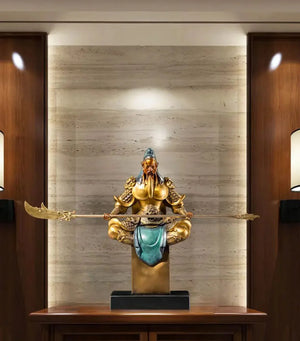
# Chinese Copper Decorations: A Timeless Art Form
## The Rich History of Chinese Copper Art
Chinese copper decorations boast a history spanning over 3,000 years, dating back to the Shang Dynasty (1600-1046 BCE). The ancient Chinese mastered copper metallurgy earlier than many other civilizations, creating both functional items and exquisite decorative pieces.
Archaeological discoveries reveal that early copper artifacts were primarily used in religious ceremonies and as status symbols for the elite. The famous “Simuwu Ding,” a massive bronze cauldron from the Shang Dynasty weighing 832.84 kg, demonstrates the advanced copper-working techniques of ancient China.
## Traditional Techniques in Copper Decoration
Chinese artisans developed numerous specialized techniques for working with copper:
Lost-Wax Casting
This intricate method involves creating a wax model, covering it with clay, then melting the wax to leave a mold for molten copper. The technique allows for extraordinary detail in decorative pieces.
Repoussé and Chasing
Artisans hammer designs from the reverse side (repoussé) and refine details from the front (chasing) to create stunning relief patterns on copper surfaces.
Inlay Work
Skilled craftsmen embed precious metals like gold and silver into copper surfaces to create contrasting decorative patterns.
## Symbolism in Chinese Copper Decorations
Traditional Chinese copper decorations are rich in symbolic meaning. Common motifs include:
- Dragons – representing imperial power and good fortune
- Phoenixes – symbolizing harmony and marital bliss
- Peonies – denoting wealth and honor
- Bats – homophones for “good fortune” in Chinese
## Regional Variations Across China
Keyword: Chinese copper decorations
Tibetan Copper Crafts
Tibetan artisans create elaborate copper prayer wheels, butter lamps, and ritual objects adorned with Buddhist symbols and deities.
Yunnan Minority Copperwork
The ethnic groups of Yunnan province produce distinctive copper jewelry and household items featuring geometric patterns and nature-inspired designs.
Beijing Palace-Style Copperware
Developed for imperial use, this style features intricate dragon motifs and sophisticated enamel work on copper surfaces.
## Modern Applications of Traditional Craft
Contemporary designers are finding innovative ways to incorporate traditional Chinese copper decoration techniques into modern interiors:
- Copper wall panels with laser-cut traditional patterns
- Minimalist copper furniture with subtle Chinese motifs
- Copper lighting fixtures combining ancient shapes with modern technology
## Preserving the Ancient Craft
Several initiatives are helping to preserve Chinese copper decoration traditions:
- Government-recognized “intangible cultural heritage” status for master craftsmen
- Apprenticeship programs at major craft centers
- University programs combining traditional techniques with modern design
- International exhibitions showcasing Chinese copper art
Chinese copper decorations represent a perfect marriage of artistic expression and technical mastery. From ancient ritual objects to contemporary design elements, this enduring art form continues to evolve while maintaining its cultural roots.